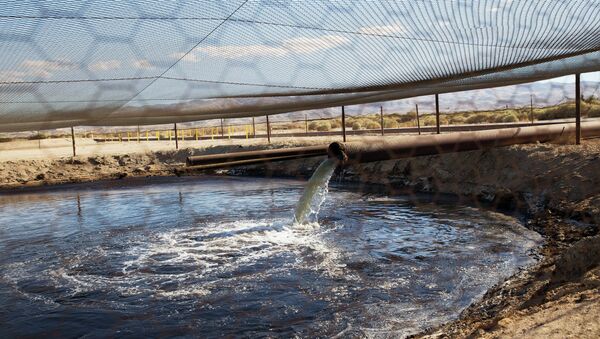The fine is part of a settlement with Slawson Exploration Company, the largest oil producer in the Midwest, that will allow the company to avoid trial.
The EPA found that Slawson had not installed required pollution controls 170 of its oil storage locations in North Dakota. Most of these locations were on the Fort Berthold Indian reservation in the state.
EPA inspectors observed that storage tanks were releasing volatile organic compounds (VOCs) into the atmosphere in 2014, Oil Patch Dispatch reports. VOCs can irritate the lungs, exacerbate asthma and other respiratory issues and can increase susceptibility to respiratory illnesses, the environmental watchdog group says.
"This Clean Air Act agreement will bring better air quality and lasting health benefits to communities in North Dakota, including the people of the Three Affiliated Tribes," Assistant Attorney General John Cruden for the Justice Department said in a statement.
The North Dakota Department of Health has enforcement actions pending against more than a dozen companies, according to Oil Patch Dispatch.
The Bakken Shale oil boom, one of the biggest US oil discoveries in decades, has been disruptive for Native American tribes in the formerly placid and sparsely populated northern state. Drilling on the reservation has brought in hundreds of millions of dollars in revenue — but has also caused pollution, health concerns, environmental degradation and cultural disruption.
The US government has a history of encroaching on the Fort Berthold reservation for railroad projects, dams or just to give land away to white homesteaders, ProPublica reported in 2013. When the Army Corps of Engineers dammed the Missouri River in 1953, more than 150,000 acres at the heart of the remaining reservation were flooded, forcing members of the Three Affiliated Tribes — the Mandan, Hidatsa and Arikara — to leave what had been a relatively fertile valley and move into the surrounding hills.
The Army Corps of Engineers is currently embroiled in another standoff in the state with the Standing Rock Sioux Tribe, who, along with environmental activists and other supporters, are refusing to allow the $3.8 Dakota Access Pipeline to run near their water supplies and through lands sacred to them. The Army Corps of Engineers has ordered a protest camp near the Standing Rock Sioux Reservation to disband; the tribe says, after 200 years of treaty violations by the US government, that enough is enough.






